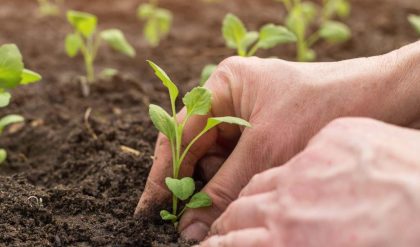Tillage may be defined as the mechanical manipulation of soil for any purpose, but usually for nurturing crops. In agriculture, the objectives of soil tillage are:
Ø To develop a desirable soil structure for a seedbed or a root bed. A granular structure is desirable to allow rapid infiltration and good retention of rainfall, to provide adequate air capacity and exchange within the soil, and to minimize resistance to root penetration. Compared to a root bed, a good seedbed has finer particles and greater firmness in the vicinity of the seeds, to enhance moisture absorption by the seeds needed for germination.
Ø To control weeds or remove unwanted crop plants (thinning).
Ø To manage plant residues. Thorough mixing of residue is desirable from the tilth and decomposition standpoints, whereas retention of residue on the soil surface or in the top layers reduces erosion. On the other hand, complete coverage is sometimes necessary to control over-wintering insects or to prevent interference with precision operations such as planting and cultivating certain crops.
Ø To minimize soil erosion by following such practices as contour tillage, listing, and proper placement of plant residue.
Ø To establish specific surface configurations for planting, irrigating, drainage, or harvesting operations.
Ø To incorporate and mix fertilizers, manure, pesticides, or soil amendments into the soil.
Ø To accomplish segregation. This may involve moving soil from one layer to another, removal of rocks and other foreign objects, or root harvesting.



